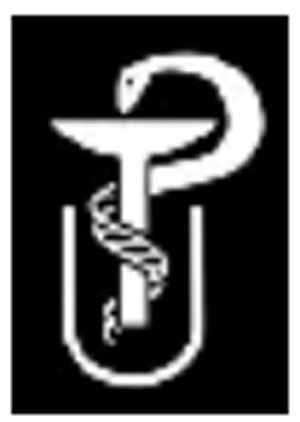预约演示
更新于:2025-08-08
CBL 0175(Incuron)
更新于:2025-08-08
概要
基本信息
非在研机构- |
权益机构- |
最高研发阶段临床前 |
首次获批日期- |
最高研发阶段(中国)- |
特殊审评- |
结构/序列
分子式C23H27ClN2O2 |
InChIKeyJURGRPIWKHUHSL-UHFFFAOYSA-N |
CAS号1197397-96-8 |
关联
100 项与 CBL 0175(Incuron) 相关的临床结果
登录后查看更多信息
100 项与 CBL 0175(Incuron) 相关的转化医学
登录后查看更多信息
100 项与 CBL 0175(Incuron) 相关的专利(医药)
登录后查看更多信息
22
项与 CBL 0175(Incuron) 相关的文献(医药)2023-09-01·BioEssays : news and reviews in molecular, cellular and developmental biology
The survival of curaxins in the cancer arena.
Article
作者: Gorgoulis, Vassilis ; Theocharous, Giorgos ; Papaspyropoulos, Angelos
With DNA damage being a primary anti-cancertarget, a need has arisen for the development of an approach that is a harmlessfor normal tissues but allows for cancer cell-specific cytotoxicity. Previous researchfrom K. Gurova's suggests that small compounds, namely curaxins that bind theDNA can cause chromatin instability and cell death in a cancer cell-specificmanner. In this brief perspective commentary, we investigate how the scientificcommunity has further developed this anti-cancer approach.
2022-04-13·Journal of healthcare engineering4区 · 医学
The Current Status of SSRP1 in Cancer: Tribulation and Road Ahead
4区 · 医学
ReviewOA
作者: Guo, Baofeng ; Zhang, Ling ; Jia, Shengnan ; Peng, Liping ; Wang, Lihui
Background and Objectives. Owing to the complexity and heterogeneity of tumors, cancer’s early diagnoses and treatment have become a provocation. Structure-specific recognition protein-1 (SSRP1) is a histone (H3-H4 or H2A-H2B) chaperone in chromatin-related processes such as transcription, cell cycle control, and DNA replication, reported in various tumor tissues. It may also be used as a biomarker. This study aimed to highlight the role of SSRP1 in cancer with a focus on the current progress and future perspective. Methods. We search PubMed and Web of Sciences with keywords “SSRP1” and “Cancer.” Only English literature was included, and conference papers and abstract were all excluded. Results. Transcription factors are classified into three groups based on their DNA binding motifs: simple helix-loop-helix (bHLH), classical zinc fingers (ZF-TFs), and homeodomains. The tumor-suppressive miR-497 (microRNA-497) acted as an undesirable regulator of SSRP1 upregulation, which led to tumor growth. The siRNA (small interfering RNA) knockdown of SSRP1 hindered cell proliferation along with incursion and glioma cell migration. Through the AKT (also known as protein kinase B) signaling pathway, SSRP1 silencing affected cancer apoptosis and cell proliferation. Conclusion. The MAPK (mitogen-activated protein kinase) signaling pathway’s phosphorylation was suppressed when SSRP1 was depleted. The effect of curaxins on p53 and NF-B (nuclear factor-κB), and their toxicity to cancer cells, is attributable to the FACT (facilitates chromatin transcription) complex’s chromatin trapping.
2022-01-01·DNA repair
The FAcilitates Chromatin Transcription (FACT) complex: Its roles in DNA repair and implications for cancer therapy
Review
作者: Bhakat, Kishor K ; Ray, Sutapa
Genomic DNA in the nucleus is wrapped around nucleosomes, a repeating unit of chromatin. The nucleosome, consisting of octamer of core histones, is a barrier for several cellular processes that require access to the naked DNA. The FAcilitates Chromatin Transcription (FACT), a histone chaperone complex, is involved in nucleosome remodeling via eviction or assembly of histones during transcription, replication, and DNA repair. Increasing evidence suggests that FACT plays an important role in multiple DNA repair pathways including transcription-coupled nucleotide excision repair (TC-NER) of UV-induced damage, DNA single- and double-strand breaks (DSBs) repair, and base excision repair (BER) of oxidized or alkylated damaged bases. Further, studies have shown overexpression of FACT in multiple types of cancer and its association with drug resistance and patients' poor prognosis. In this review, we discuss how FACT is accumulated at the damage site and what functions it performs. We describe the known mechanisms by which FACT facilitates repair of different types of DNA damage. Further, we highlight the recent advances in a class of FACT inhibitors, called curaxins, which show promise as a new adjuvant therapy to sensitize multiple types of cancer to chemotherapy and radiation.
1
项与 CBL 0175(Incuron) 相关的新闻(医药)2023-01-04
关注并星标CPHI制药在线过去的2022年,是充满不确定性和挑战的一年,新冠疫情给人们的生活和科研工作带来诸多不便,也让处于资本寒冬的创新药企雪上加霜。这一注定会被载入史册的年份,科研界又带来了哪些值得记录的进展呢?今天我们从新靶点的挖掘来一探究竟。 MYC MYC早在40年前就被确定为致癌基因,其转录因子家族包括c-MYC、L-MYC和N-MYC,这些转录因子是细胞增殖、分化、细胞周期和代谢的关键调节因子。尽管MYC具有十分诱人的治疗前景,但是其转录因子是出了名的难以成药。这是因为在结构上转录因子呈现无序状态,没有明显的结合口袋。另外,转录因子通过蛋白-蛋白相互作用,难以开发活性药物。 面对这一难成药却前景光明的靶点,目前领跑 MYC 赛道的药物仅有OTX-2002和Omomyc。其中OTX-2002由Omega Therapeutics公司研发,今年11月2日,FDA授予OTX-2002孤儿药称号。 OTX-2002是一种通过脂质纳米颗粒给予患者的mRNA治疗。该因子通过表观遗传调节在转录前下调MYC的表达,同时克服MYC的自动调节。 目前,OTX-2002正在进行I/II期MYCHELANGELO I试验(NCT05497453)中作为单一药物和与TKI或PD-(L)1抑制剂联合使用的评估,该试验针对复发或难治性肝细胞癌(HCC)和其他已知与MYC癌基因相关的实体肿瘤类型。 ZBP1 目前,自然界中可见的DNA构象包括A-DNA、B-DNA与Z-DNA,其中当DNA上的碱基受到甲基化修饰时,则易转变成Z型,Z-DNA可能参与调控基因转录。ZBP1(Z-DNA binding protein 1),又称DNA依赖性IFN调节因子激活剂(DAI),是一种Z-DNA和Z-RNA的结合蛋白。研究表明,ZBP1是识别病毒感染后产生的Z-DNA/RNA的天然感受器,并且能够触发不同形式的细胞死亡以及炎症反应。 科学家们目前已经确定了一种小分子候选药物--CBL0137,它属于一类叫作curaxins的小分子新药,可以触发细胞中左旋 Z-DNA 的形成,重新点燃对免疫检查点阻断(ICB)具有抗性的冷肿瘤的免疫反应,激活癌症相关成纤维细胞的坏死性凋亡。 临床前研究表明,在联合使用CBL0137和帕比司他两种药物之后,小鼠体内的肿瘤消失,并且在整个实验观察期间再未复现;在未接受治疗或只接受单一药物治疗的对照组小鼠中,肿瘤则持续生长。结果表明,CBL0137引起的 Z-DNA 翻转激活 ZBP1,从而诱导炎症细胞死亡,与此同时,激发免疫系统特异性攻击肿瘤。 基于这项研究成果,研究团队将在今年晚些时候开展 CBL0137 与免疫疗法联合治疗黑色素瘤的I期临床试验。 RASA2 今年8月发表在Nature杂志上的一篇论文揭示,研究人员基于CRISPR技术确定了一种预防T细胞功能障碍的靶点基因--RASA2,并证明敲除该基因可增强T细胞对抗原的敏感性,并能改善CAR-T和TCR-T细胞的效应器功能和持久性。 RASA2 是一种 RAS GTPase 激活蛋白 (RasGAP),是人类T细胞中的信号检查点,这项研究的发现意味着 RASA2 作为一个有希望的靶标基因将为 T 细胞治疗血液病和实体瘤适应症提供新的策略。 ASGR1 ASGR1 (Asialoglycoprotein Receptor 1)是唾液酸糖蛋白受体的主要亚型,在肝脏中特异表达,介导血液去唾液酸糖蛋白的内吞并转运至溶酶体降解。在一项针对冰岛人的大规模基因研究中发现,功能缺失的ASGR1变异与低胆固醇和心脑血管疾病风险降低有关。然而,尚不清楚ASGR1究竟如何调控胆固醇代谢。 今年8月发表在Nature杂志上的一篇文章以新颖的角度解答了这个谜题,详细介绍了ASGR1与胆固醇外排、脂质生成之间的关系。研究表明,去唾液酸糖蛋白(配体)与位于细胞膜上的ASGR1结合,经由内吞途径进入到溶酶体中,在溶酶体酸性条件下被降解成游离氨基酸等营养物质激活溶酶体表面的mTORC1及抑制AMPK,进而增加下游泛素连接酶BRCA1/BARD1的蛋白水平,促进LXR蛋白降解。而当ASGR1缺失或被抑制时,糖蛋白内吞降解减少,溶酶体内的氨基酸水平降低,导致mTORC1抑制和AMPK激活,一方面E3泛素连接酶复合物BRCA1/BARD1减少,引起LXR增多,ABCG5/G8表达增加,胆固醇外排增多;另一方面AMPK抑制SREBP通路,防止脂肪酸合成增加。该研究为ASGR1作为新的降脂靶点提供了依据。 CLEC7A 作为中枢神经系统中专业的吞噬细胞,小胶质细胞在阿尔茨海默病(AD)的发生发展过程中发挥着重要的作用,Aβ(β淀粉样蛋白)可促进小胶质细胞活化为疾病相关小胶质细胞(DAM)。遗传学研究显示DAM在阿尔茨海默病中扮演着关键角色。TREM2和CLEC7A是小胶质细胞上的免疫受体,它们可以激活下游的脾脏酪氨酸激酶(SYK),促进小胶质细胞活化成为DAM清除Aβ斑块。 今年12月份发表在Cell上的研究发现,SYK是小胶质细胞活化成为DAM所必需的,SYK缺失会导致小胶质细胞清除Aβ的能力显著下降,从而加速AD模型小鼠疾病进展。而CLEC7A受体可直接活化SYK激酶,从而增强小胶质细胞清除Aβ斑块的能力。研究发现当系统性递送靶向CLEC7A抗体至小鼠体内时,可活化TREM2 R47H蛋白变异小鼠内的SYK激酶,进而促进小胶质细胞活化,因此CLEC7A有可能成为AD免疫疗法的新治疗选择,激活CLEC7A或许是一种有前景的AD疗法。 目前,国内创新药研发呈现出靶点扎堆、内卷严重的现象,以上新靶点的发现,或许可以为创新药研发提供新的赛道。目前针对这些靶点的研发均处于早期阶段,但它们又展现出巨大的应用前景,毫无疑问,针对这些创新靶点的药物研发一旦成功,将具有里程碑的意义。 参考来源: 1. Asher Mullard. Climbing cancer's MYC mountain. Nature Reviews Drug Discovery. 2. Drug combination makes cancer disappear in mice with neuroblastoma. Retrieved November 19, 2018, from https://www.eurekalert.org/pub_releases/2018-11/eeco-dcm111318.php. 3.https://bio.libretexts.org/Bookshelves/Genetics/Book%3A_Working_with_Molecular_Genetics_(Hardison)/Unit_I%3A_Genes_Nucleic_Acids_Genomes_and_Chromosomes/2%3A_Structures_of_Nucleic_Acids/2.5%3A_B-Form_A-Form_and_Z-Form_of_DNA. 4. Kuriakose, T. & Kanneganti, T.-D. ZBP1: Innate Sensor Regulating Cell Death and Inflammation. Trends in Immunology 39, 123-134 (2018). 5. Wang, J.Q., Li,L.L., Hu, A., Gang, D., Wei, J., Li, Y.F., Liu, Y.B., Lu, X.Y., Qiu, Z.P., Shi, X.J., Zhao, X.L., Luo, J., Song, B.L.. (2022). Inhibition of ASGR1 decreases lipid levels by promoting cholesterol excretion. Nature. DOI: 10.1038/s41586-022-05006-3. 6. Wang S, Sudan R, Peng V, et al. TREM2 drives microglia response to amyloid-β via SYK-dependent and -independent pathways. Cell. 2022;185(22):4153-4169.e19. doi:10.1016/j.cell.2022.09.033. 扫描下方二维码,发送“新年快乐”,领取双旦好礼来源:CPHI制药在线声明:本文仅代表作者观点,并不代表制药在线立场。本网站内容仅出于传递更多信息之目的。如需转载,请务必注明文章来源和作者。投稿邮箱:Kelly.Xiao@imsinoexpo.com▼更多制药资讯,请关注CPHI制药在线▼点击阅读原文,进入智药研习社~
临床1期孤儿药免疫疗法信使RNAAACR会议
100 项与 CBL 0175(Incuron) 相关的药物交易
登录后查看更多信息
研发状态
10 条进展最快的记录, 后查看更多信息
登录
| 适应症 | 最高研发状态 | 国家/地区 | 公司 | 日期 |
|---|---|---|---|---|
| 肺癌 | 临床前 | 美国 | 2010-04-15 | |
| 肺癌 | 临床前 | 美国 | 2010-04-15 | |
| 黑色素瘤 | 临床前 | 美国 | 2010-04-15 | |
| 黑色素瘤 | 临床前 | 美国 | 2010-04-15 |
登录后查看更多信息
临床结果
临床结果
适应症
分期
评价
查看全部结果
| 研究 | 分期 | 人群特征 | 评价人数 | 分组 | 结果 | 评价 | 发布日期 |
|---|
No Data | |||||||
登录后查看更多信息
转化医学
使用我们的转化医学数据加速您的研究。
登录
或

药物交易
使用我们的药物交易数据加速您的研究。
登录
或

核心专利
使用我们的核心专利数据促进您的研究。
登录
或

临床分析
紧跟全球注册中心的最新临床试验。
登录
或

批准
利用最新的监管批准信息加速您的研究。
登录
或

特殊审评
只需点击几下即可了解关键药物信息。
登录
或

生物医药百科问答
全新生物医药AI Agent 覆盖科研全链路,让突破性发现快人一步
立即开始免费试用!
智慧芽新药情报库是智慧芽专为生命科学人士构建的基于AI的创新药情报平台,助您全方位提升您的研发与决策效率。
立即开始数据试用!
智慧芽新药库数据也通过智慧芽数据服务平台,以API或者数据包形式对外开放,助您更加充分利用智慧芽新药情报信息。
生物序列数据库
生物药研发创新
免费使用
化学结构数据库
小分子化药研发创新
免费使用

